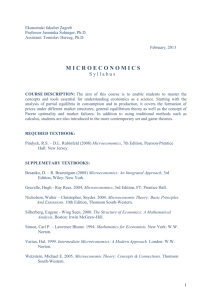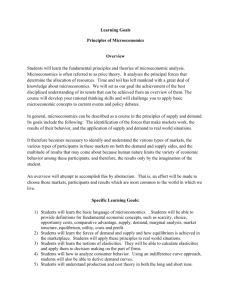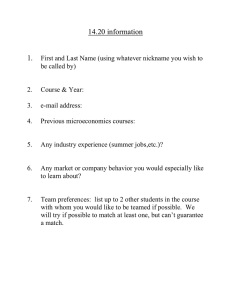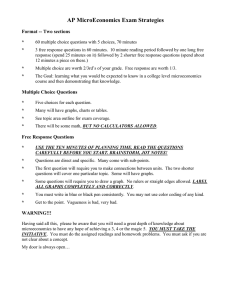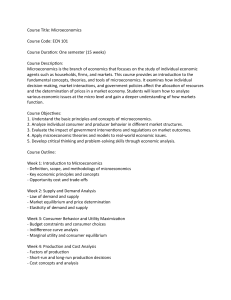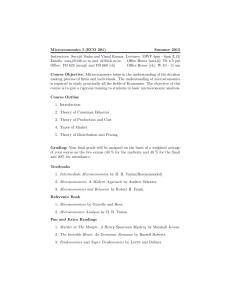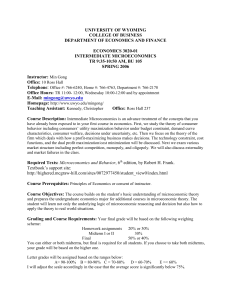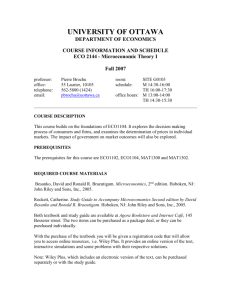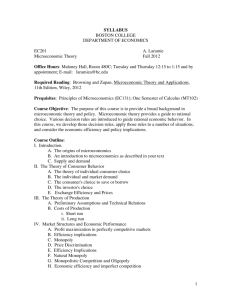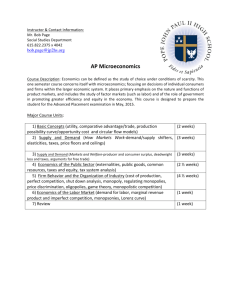Ekonomski fakultet Zagreb
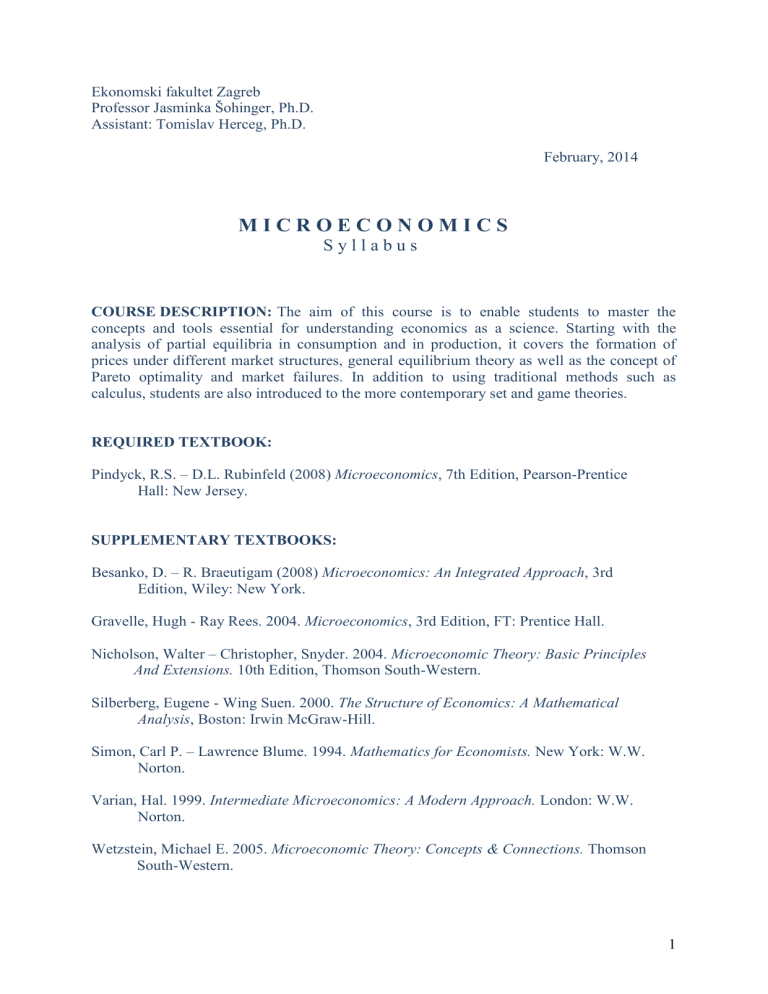
Ekonomski fakultet Zagreb
Professor Jasminka Šohinger, Ph.D.
Assistant: Tomislav Herceg, Ph.D.
February, 2014
M I C R O E C O N O M I C S
S y l l a b u s
COURSE DESCRIPTION: The aim of this course is to enable students to master the concepts and tools essential for understanding economics as a science. Starting with the analysis of partial equilibria in consumption and in production, it covers the formation of prices under different market structures, general equilibrium theory as well as the concept of
Pareto optimality and market failures. In addition to using traditional methods such as calculus, students are also introduced to the more contemporary set and game theories.
REQUIRED TEXTBOOK:
Pindyck, R.S. – D.L. Rubinfeld (2008) Microeconomics , 7th Edition, Pearson-Prentice
Hall: New Jersey.
SUPPLEMENTARY TEXTBOOKS:
Besanko, D. – R. Braeutigam (2008) Microeconomics: An Integrated Approach , 3rd
Edition, Wiley: New York.
Gravelle, Hugh - Ray Rees. 2004. Microeconomics , 3rd Edition, FT: Prentice Hall.
Nicholson, Walter – Christopher, Snyder. 2004. Microeconomic Theory: Basic Principles
And Extensions. 10th Edition, Thomson South-Western.
Silberberg, Eugene - Wing Suen. 2000. The Structure of Economics: A Mathematical
Analysis , Boston: Irwin McGraw-Hill.
Simon, Carl P. – Lawrence Blume. 1994. Mathematics for Economists. New York: W.W.
Norton.
Varian, Hal. 1999. Intermediate Microeconomics: A Modern Approach.
London: W.W.
Norton.
Wetzstein, Michael E. 2005. Microeconomic Theory: Concepts & Connections. Thomson
South-Western.
1
EXAMS AND GRADING:
There will be two midterms and a final exam. They will include multiple choice questions, essay questions and problems. To complete the course successfully, a student will have to pass all midterms and the final exam. The midterms and the final will determine 90% of the grade (30% each) and 10% will be determined by solving problem sets, presence and activity/presentation in class.
ACADEMIC ETHICS: Students are expected to uphold the principle of academic honesty.
LECTURES WILL BE ORGANIZED AROUND THE FOLLOWING TOPICS:
20.02.2014. Analysis of consumer behavior. Elasticity.
27.02.2014. Preferences and utility.
06.03.2014. Consumer equilibrium.
13.03.2014. Comparative static analysis: income and substitution effects.
20.03.2014. Individual and market demand.
27.03.2014. MIDTERM I.
03.04.2014. Analysis of producer behavior. Production function.
10.04.2014. Cost of production.
17.04.2014. Profit maximization and competitive supply.
24.04.2014. MIDTERM II.
08.05.2014. Analysis of competitive markets.
15.05.2014. Monopoly. Monopsony. Monopolistic discrimination of prices. Monopolistic
competition.
22.05.2014. Oligopoly. Game theory in the analysis of oligopolistic markets.
29.05.2014. FINAL
2
